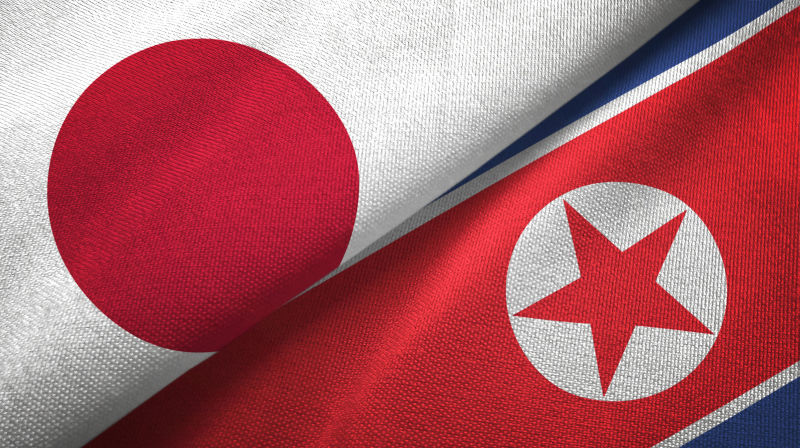Japan-North Korea top secret negotiations
April 14, 2023
In East West relations it has become something of a habit. First you reach an agreement promising flowers and chocolates. The other side reacts with concessions and hopes for a brighter future. Then your hawks move in. They say you should never have made those promises. The agreement is forgotten or denied, but only after your side has gained what the other side promised.
Examples include the agreement over German reunification where the West promised NATO would not move one inch forward.
Then there was the United States agreeing formally that Taiwan was an inalienable part of China.
Or the Minsk agreement that Russian-speaking areas of Ukraine should have autonomy.
But the icing on the cake has to be the agreement called the Pyongyang Declaration of 2002.
Signed by the leaders of both North Korea and Japan the Declaration promised the economic aid needed to bring the 30 million long suffering people of North Korea from poverty and oppression. It also promised that 170 million Japanese and South Koreans would be freed from the threat of nuclear annihilation.
North East Asia would become a zone of peace and diplomatic cooperation.
But it was not carried out. Why?
Now, finally, we get part of the story from a book titled (in Japanese) Japan-North Korea Top Secret Negotiations by an NHK journalist, Masuda Tsuyoshi, who throughout most of this drama, was bankisha* to Tanaka Hitoshi, head of Japan’s foreign ministrys Asia and Oceanic Bureau (Australia included).
* Under Japans system of journalist clubs controlling major information sources, a bankisha is a journalist assigned virtually full-time to cover a particular news source.
For years rumours had been circulating that North Korea still held Japanese citizens abducted during its crazy period of the late seventies and early eighties.
For almost a year Tanaka made secret weekend visits mainly to Dalian in China to negotiate with a younger, military-medalled man who called himself Kim Chyoru of North Koreas top organisation, the National Defence Committee. (North Korean defectors have variously suggested other members of North Koreas military establishment were involved, including one, Ryu Gyon, killed in 2011 for failure of the abduction talks with Japan).
North Korea reluctantly admitted to holding five abductees. The others had all died, it was claimed, or never existed.
The result was the Pyongyang Declaration signed by Koizumi in October 2002 on a one day visit to Pyongyang. In exchange for the return of the five abductees, an apology, and a moratorium on rocket testing, Tokyo promised normalisation of relations plus substantial economic aid.
But included in the Japanese delegation was one Abe Shinzo, then deputy cabinet secretary. Behind him were powerful abductee rescue organisations formed earlier by Japans rightwing. The rightwing was not happy with the promised normalisation of relations.
On return to Japan Abe began to insist North Korea was hiding many more abductees, perhaps as many as 800 (one of them was found dead under a boat near my house on the Pacific side of Japan).
Eventually Tokyos official figure for missing abductees was reduced to 17 of which Pyongyang insisted four were unknown, eight were dead and five were returned.
Japan was shocked by the deaths. To prove that one of the most grieved of the abductees was dead - a girl named Yokota Megumi abducted almost certainly by mistake at age 13 Pyongyang provided samples of her cremation bones.
Abe then provided an amateur DNA tester who said the bones belonged to someone else, despite criticism that cremation-tainted bones cannot be tested for DNA.
Under more Abe Shinzo pressure, Tokyo decided to break promises that the returned abductees could go back to North Korea temporarily to persuade a spouse and four children to go to Japan.
North Korea reluctantly agreed that the spouse and children should be forced to go to Japan regardless.
Tokyo then found it convenient to allow the rest of the agreements to slip away under the claim that some of the alleged missing abductees were still alive, Megumi in particular.
Megumis grieving parents together with shrines to Megumi were taken around the world and presented to world leaders as further proof of Pyongyang duplicity in refusing her return (though it had already been reported that she had married a South Korean abductee and had suicided in 1994 after giving birth to a daughter).
Her parents had to wait till 2014 before they were allowed by Tokyo to meet the daughter, and then only in a third country (Mongolia). Their report of the meeting made no mention of Megumi. I had a chance shortly after to ask the mother, Sakie, why. She replied cryptically that her role was to support other abductee parents.
Meanwhile all critics of Tokyos abductee policies have been firmly criticised, forced to apologise and even fined.
Even those relying on Foreign Ministry leaks confirming Pyongyangs version of events are forced in retractions.
The concocted abductee issue now seems destined to continue for ever, even though most of the allegedly surviving abductees would now be over 70 years old and of no possible use to North Korea.
Japan, and not just Tokyo, has lost all interest in the once proudly named Pyongyang Declaration, and in any attempt to establish relations with North Korea.
Masuda partly blames disappointment in Japan over the deaths of such a high proportion of abductees, and the impression Pyongyang bargained the fate of the five surviving abductees to gain major concessions from Japan.
But the activities and pressures from the now deceased former prime minister, Shinzo Abe, cannot be overlooked.
Tanaka Hitoshi has since had to live under police protection from a house fire-bombing threat by the Japanese rightwing.

